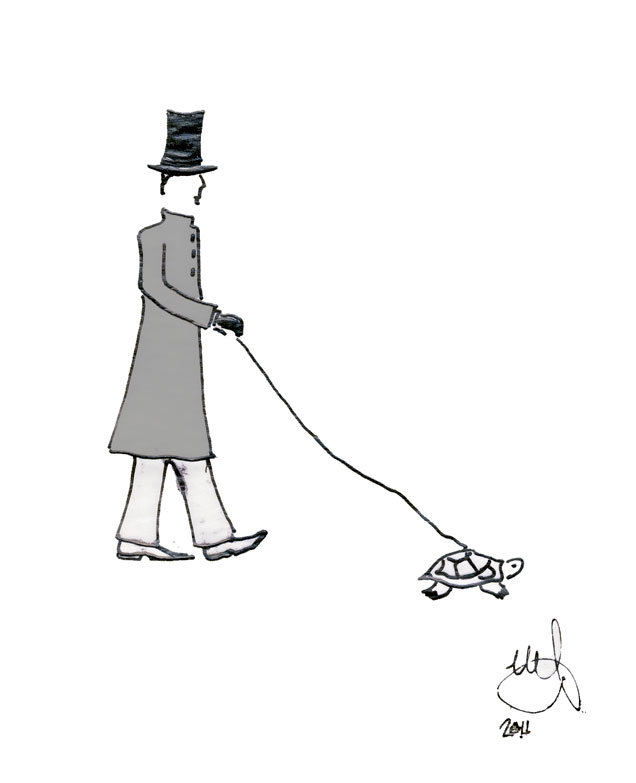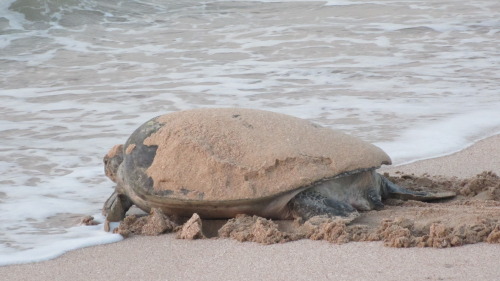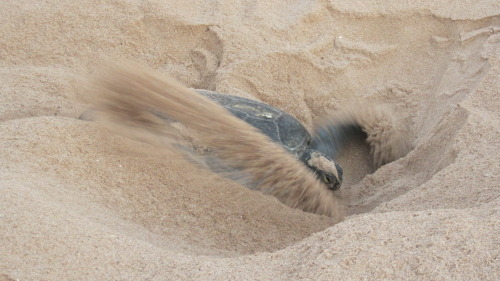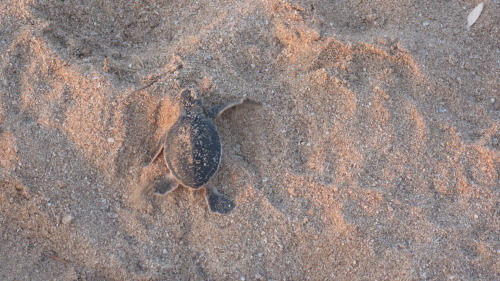Mindfulness and The Flâneur
 Tuesday, October 18, 2011 at 3:17PM
Tuesday, October 18, 2011 at 3:17PM Having blogged about The Green Turtles of Ras Al Jinz last week, it is with amazement this week that I note the following:
"Around 1840 it was briefly fashionable to take turtles for a walk in the arcades. The flâneurs liked to have the turtles set the pace for them." Walter Benjamin in “Arcades Project”, a study of 19th century Parisian life.

The Flâneur: A Radical-Chic Icon by sketchbloom
Viewed through a 21st century filter this might at first appear horrific, but understanding the accompanying vocabulary, background and concepts, and seeing with a 19th century perspective, our focus alters.
Referring to a person who walks the city in order to experience it, Charles Baudelaire is said to have coined the term “flâneur” from the verb ‘flâner’, which means “to stroll” in French.
In the 19th century, industrialization had brought with it many social and economic changes. Many children of upper middle class families were given an income without having to work. They had no reason to hurry and so dawdling was in a sense encouraged. While many of these young people might have become cynical in their observations of urban living, others participated in it in order to fully observe. The flâneur was born.
The construction of the Paris Arcades in the early 19th century, encouraged this movement. Passageways through neighbourhoods were covered with glass roofs, creating an interior-exterior experience. Precursors of modern day malls, these arcades offered not only an escape from the hustle and bustle of street crowds and markets, but were also ideal environments for flâneurs.
The flâneur would stroll through these arcades, at home in these interior-exterior worlds. Part of the crowd, but at the same time totally aloof from it, the flâneur would take in the sights and so experience the surrounding culture. Determined looking required a slow place and a turtle on a leash would enforce this!
Words always contain layers of potential meaning, and the flâneur offers us a new way of seeing the world.
“Flâneur is not limited to someone committing the physical act of peripatetic stroll in the Baudelairian sense, but can also include a ‘complete philosophical way of living and thinking’”. Wikipedia
As mindfulness gains in popularity, so too I believe, will the word “flâneur” make a 21st century comeback; this time with added connotations.
Jon Kabat-Zinn, often defines mindfulness as “moment by moment, non-judgmental awareness”. Whether the 19th century flaneur was non-judgmental or not is debatable, but when our “dilly-dallying” becomes conscious, we are certainly practicing mindfulness.
Are we able to sit or walk somewhere and merely observe without judging?
Are we able to be mall flâneurs? George Davis, @virtualDavis, encourages us to consider becoming a metro flâneur!
Are we able to watch our own inner landscapes with detached observation?
To what extent are we able to view our surroundings with the boundaries between interior and exterior dismantled?
When we access the virtual highways, where access to information is rapid, do we ever stop to recollect that there are many others present online at any given moment, simply looking?
Are we willing to slow down and not retweet without reading the linked content first?
Speed, whether online or offline, is a characteristic of the modern world. The flâneur reminds us to set the pace of our own lives.
Cast as a character in the 21st century drama of life, the flâneur thus begins to play the role of consciousness.
We hopefully won’t leash a turtle, but we can remember that found in the mythology of most cultures, the turtle is often linked to creation and thereby creativity. A creature of both land and sea, the turtle encourages an attitude of adapting and flourishing regardless of environment.
Mindfulness offers us a key.
 culture,
culture,  flaneur,
flaneur,  mindfulness,
mindfulness,  place,
place,  technology,
technology,  turtles in
turtles in  culture,
culture,  mindfulness,
mindfulness,  place,
place,  technology
technology  Email Article
Email Article 

